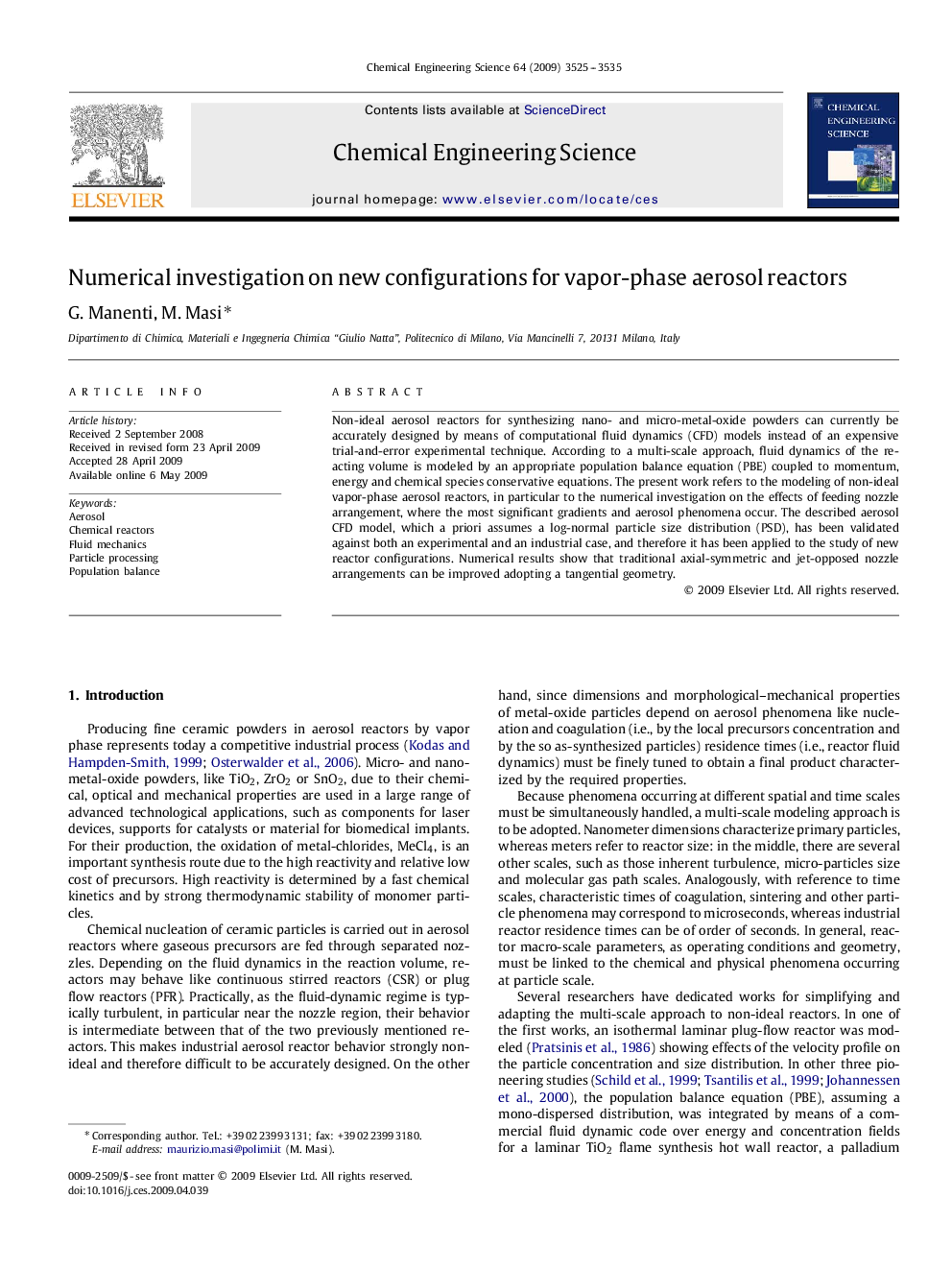| Article ID | Journal | Published Year | Pages | File Type |
|---|---|---|---|---|
| 157985 | Chemical Engineering Science | 2009 | 11 Pages |
Abstract
Non-ideal aerosol reactors for synthesizing nano- and micro-metal-oxide powders can currently be accurately designed by means of computational fluid dynamics (CFD) models instead of an expensive trial-and-error experimental technique. According to a multi-scale approach, fluid dynamics of the reacting volume is modeled by an appropriate population balance equation (PBE) coupled to momentum, energy and chemical species conservative equations. The present work refers to the modeling of non-ideal vapor-phase aerosol reactors, in particular to the numerical investigation on the effects of feeding nozzle arrangement, where the most significant gradients and aerosol phenomena occur. The described aerosol CFD model, which a priori assumes a log-normal particle size distribution (PSD), has been validated against both an experimental and an industrial case, and therefore it has been applied to the study of new reactor configurations. Numerical results show that traditional axial-symmetric and jet-opposed nozzle arrangements can be improved adopting a tangential geometry.
Related Topics
Physical Sciences and Engineering
Chemical Engineering
Chemical Engineering (General)
Authors
G. Manenti, M. Masi,
